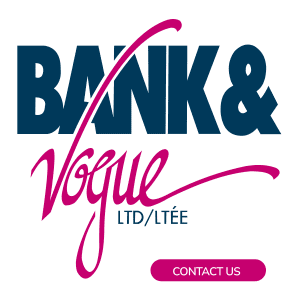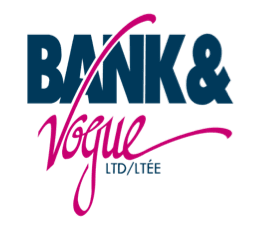The second-hand footwear market has undergone significant transformations since 2020, influenced by evolving consumer behaviors, economic factors, and technological advancements.
5 years later, and there have been some shifts in the overall landscape of this market driven by an increased demand for sustainability and eco-conscious choices.
Here’s an overview of the global used shoes market in 2025:

Estimated Market Size for Used Shoes in 2025 Compared to 2020
While specific figures for the used shoe market are limited, the broader second-hand apparel market has seen substantial growth. In 2024, the global second-hand product market was valued at $424.1 billion and is projected to reach $478.99 billion in 2025, reflecting a compound annual growth rate of 12.9%. This growth indicates a substantial expansion in the resale sector, with footwear being a significant contributor. Compare and contrast this with the annual growth rate of footwear in general at 2.37%, and it’s easy to see this subset of the shoes market’s trajectory.
Notable Shifts in Geographical Demand for Used Shoes
The demand for second-hand footwear has expanded globally, with notable growth in regions like Europe and North America. Platforms such as Vinted have experienced significant success in the UK, marking it as one of their largest markets since early 2021, and it is estimated that more than 87% of Europeans already participate in the second-hand market. This trend suggests a growing acceptance and demand for used shoes in Western markets.
A significant driver of this surge in the resale market overall is the anticipated rise in tariffs on Chinese goods, which could impact the cost of new apparel. A report from ThreadUp notes that nearly 59% of consumers surveyed stated they would turn to more affordable secondhand options if new clothing prices increase due to higher tariffs. Economic uncertainties alongside inflation have led consumers to seek cost-effective alternatives, boosting the appeal of second-hand markets. The affordability of used shoes offers consumers a budget-friendly option without compromising on quality, making the second-hand market more insulated during economic downturns.
New Fashion Trends Influencing Demand for Second-Hand Shoes
The resurgence of vintage and classic styles has heightened interest in second-hand shoes. Consumers are increasingly drawn to unique, timeless pieces that stand out from mass-produced items, driving demand for vintage footwear. Younger demographics, particularly Gen Z and Millennials, are driving this heightened interest, have shown increased participation in the second-hand market. Their preference for sustainable and unique fashion choices has driven the popularity of resale platforms and thrift shopping.
Sustainability has become a more significant factor in consumer purchasing decisions, especially with general knowledge about how wasteful we are in our day-to-day lives. Many buyers prioritize eco-friendly products, recognizing the environmental benefits of extending the lifecycle of footwear through second-hand purchases.
Advancements in Sustainable Processing of Used Shoes
Technology is an omnipresent, driving force in most, if not all, industries and recycling practices have advanced, with brands focusing on repurposing materials from unsellable shoes. It is estimated that 15% of footwear can be repaired and reused, while 75% could be recycled to obtain raw materials for manufacturing new products, helping reduce the waste associated with net new products. While the reuse of shoes is better for the environment, overly damaged items can pose challenges.
Innovations include using recycled rubber and other sustainable materials in new footwear production, reducing landfill waste.
Technological innovations, including AI and digital product passports, have enhanced the resale experience. These tools improve authentication, streamline transactions, and provide detailed product histories, increasing consumer confidence.
Brands Embracing Resale and Sustainability Initiatives Since 2020
Every day and luxury brands have increasingly adopted resale and sustainability initiatives. Collaborations with upcycling and resale platforms have become common, extending product lifecycles and promoting responsible consumption. For example, BVH Services (Bank & Vogue’s sister company) latest project sourced materials for the Converse Renew project, upcycling shirts and transforming formal menswear attire for sneaker lovers, giving the classic garment a new life as an iconic Converse Renew Shoe. Beyond Retro sourced striped shirts, which were graded and cut for the collection, to create a summer shoe with a breathable, lightweight upper.
Collaborations between luxury brands and resale platforms have become more prevalent. These partnerships aim to authenticate and promote pre-owned luxury items, catering to the growing market for second-hand luxury goods.
Ensuring Transparency About the Condition and Sustainability of Used Shoes
Companies are also providing more detailed product descriptions, condition reports, and sustainability information to inform consumers. This transparency helps buyers make informed decisions and fosters trust in the second-hand market.
Online platforms have implemented rigorous authentication processes to combat counterfeiting and build trust.
For instance, Vinted offers item verification services to ensure product authenticity.
Impact of Global Regulations or Policies on the Import/Export of Used Shoes
Global regulations have influenced the trade of used shoes, with policies aiming to ensure ethical sourcing and environmental compliance. Companies must navigate these regulations to operate effectively in international markets.
Despite growing acceptance, some consumers still harbor reservations about used shoes, associating them with inferior quality or hygiene concerns. Educational campaigns and quality assurances are essential to shift these perceptions.
How Bank & Vogue Continues Making a Difference
Our mission at Bank & Vogue is to create a better world by reusing, reducing, and recycling. We are leaders in the buying and selling of bulk used goods, and we’re developing the global logistics behind it.
Join us, and help us reduce the amount of waste we produce, reuse what can be reused, and recycle the rest.
If you are looking to buy or sell bulk used shoes, clothing or other goods, contact us today.








